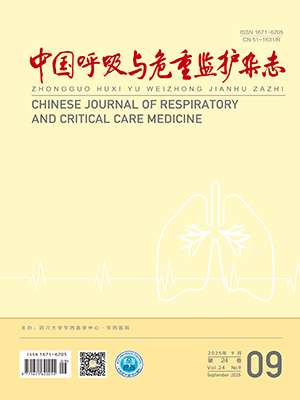Objective To explore the clinical significances of serum procalcitonin ( PCT) and Creactive protein( CRP) in diagnosis and severity assessment of sepsis. Methods A total of 72 patients with different severities of sepsis admitted to Wenzhou Second People’s Hospital from June 2005 to September 2007, including 22 cases of sepsis, 26 cases of severe sepsis, and 24 cases of sepsis shock. Meanwhile, twenty non-sepsis patients were enrolled as control group. The differences of serum PCT and CRP levels, acute physiology and chronic health evaluation Ⅱ ( APACHEⅡ) scores and sepsis related organ failure assessment ( SOFA) scores were compared in controls and the septic patients with different severities and different prognosis. Results The PCT levels of patients with sepsis, severe sepsis and sepsis shock were significantly higher than that in the non-sepsis group [ ( 1. 51 ±1. 57) , ( 5. 62 ±3. 78) and ( 13. 56 ±8. 16) vs ( 0. 12 ± 0. 33) μg/L, P lt;0. 05 or P lt; 0. 01, respectively] . The CRP level, APACHEⅡ and SOFA were also increased in septic patients compared to control and progressively elavated by the severities of sepsis patients ( P lt; 0. 05 or P lt; 0. 01) , however, CRP levels were not significant different ( P gt; 0. 05) . The PCT levels, APACHEⅡ and SOFA of the patients with good prognosis were lower than those with poor prognosis( all P lt; 0. 01) , but the CRP levels was not significant different( P gt;0. 05) . Conclusion The serumlevel of PCT is superior to serumlevel of CRP in severity classification and prognosis assessment.
Citation: JIANG Xiangao,WANG Xiaobo,WANG Renshu. The Clinical Significance of Serum Procalcitonin and C-reactive Protein in Sepsis. Chinese Journal of Respiratory and Critical Care Medicine, 2009, 09(5): 429-431. doi: Copy
Copyright © the editorial department of Chinese Journal of Respiratory and Critical Care Medicine of West China Medical Publisher. All rights reserved




